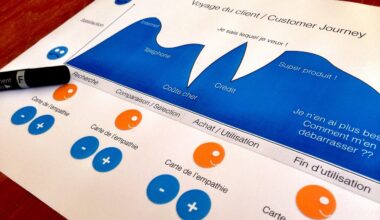Understanding Pay What You Want Pricing
Pay What You Want (PWYW) pricing is an innovative strategy that offers customers the freedom to choose the amount they pay for a product or service. This approach is designed to create a sense of value that is tied to consumer perception rather than preset prices. Customers feel empowered as they engage with businesses, making financial decisions based on their perceived worth of the offering. The flexibility inherent in PWYW pricing can attract a diverse range of customers, including those with limited financial means, thus fostering goodwill and potentially increasing customer loyalty. However, with this flexibility comes challenges, such as the risk of abuse where customers may exploit the model, leading companies to implement strategies aimed at minimizing this risk. To balance profitability and customer empowerment, organizations must assess consumer behavior thoroughly. Creating a framework that promotes fairness while encouraging voluntary payments can cultivate a sustainable marketplace. Ultimately, PWYW pricing requires careful consideration of psychological and economic factors influencing customer decisions while focusing on long-term relationships over immediate profits.
A key strategy to mitigate abuse in PWYW pricing systems involves clearly communicating the value proposition of the offering. By articulating the quality, benefits, and unique features associated with a product or service, businesses can help consumers understand why their contribution matters. Clearly defined expectations will encourage fair payments while discouraging underpricing. For instance, showcasing customer testimonials, expert reviews, and comparative pricing can build trust in the offering, making it less likely for customers to take undue advantage. Additionally, emphasizing social responsibility can enhance the perceived value, as people are often willing to support causes they deem worthwhile. Aligning the payment structure with ethical consumerism can boost engagement and lead to more substantial contributions. Certainly, providing tiered payment options alongside the PWYW model can also enhance customer confidence. Customers may feel more comfortable paying a set price or choosing based on specific benefits. By ensuring people know how their money is being used, businesses can create loyalty, resulting in a win-win situation where both parties feel satisfied with the exchange.
Leveraging Customer Insights
To effectively manage PWYW pricing models, businesses must invest in understanding their customer base. Analyzing buying patterns and preferences can offer invaluable insights into consumer behavior. By employing data analytics, companies can uncover trends that shed light on how different demographics perceive value and price, allowing for customized strategies. For example, surveying customers after a purchase can provide feedback on their willingness to pay and motivations. Leveraging this information to tailor marketing initiatives can not only enhance contributions but also build long-lasting relationships. Providing personalized recommendations and reminders based on past purchases can further engage customers, ensuring that they return to make additional payments. With this understanding, businesses can develop targeted outreach that resonates with specific consumer segments. Additionally, segmenting customers according to their payment history allows for the identification of repeat customers who may be willing to pay more over time. This approach ultimately creates a feedback loop that benefits the business while highlighting the importance of transparency in the PWYW model.
Another effective approach involves creating a sense of community around the product or service offering. Building relationships within the consumer base can foster loyalty, ultimately encouraging fair payment practices. Engaging with customers through social media platforms, community events, or exclusive membership programs can help create a unique identity tied to the brand. When customers feel like they belong to a community, they are more inclined to contribute fairly in a PWYW pricing model. This camaraderie can prompt consumers to share their experiences and encourage their peers to be similarly supportive. Companies can incentivize community participation by implementing a reward system that recognizes those who contribute above their peers. Consider implementing platforms for discussions or feedback where these supporters can interact. Brands can also hold initiatives that give back to the community or support causes related to their mission. This altruistic attitude can encourage customers not only to pay fairly but also to advocate on behalf of the brand, creating an environment that fosters collective responsibility and fairness.
Establishing Payment Minimums
Establishing a minimum payment threshold can serve as a protective measure against exploitation within a PWYW pricing model. By setting a reasonable baseline, businesses can ensure that, while they maintain flexibility and consumer empowerment, they also safeguard their revenue streams against those who might pay significantly below a fair price. A minimum payment communicates the business’s understanding of its operational costs while still involving the consumer in the pricing process. For instance, businesses can frame the policy as a means of supporting the sustainability of the service or product. When customers perceive that their contributions serve a greater purpose, they may feel more compelled to meet or exceed the minimum requirement. While some may argue that setting a minimum could deter participation, research indicates that it can actually encourage larger contributions. In practice, businesses may even highlight the positive impact of meeting minimum payments, further motivating customers. Integrating storytelling into marketing efforts can illustrate how each dollar serves a purpose, potentially driving higher engagement and satisfaction.
Another key element of preventing abuse in PWYW pricing involves fostering transparency about pricing rationale and how funds are utilized. By openly discussing how payments contribute to the overall success of the business, organizations can build trust with customers. Providing insight into operational costs, development expenses, and community initiatives funded by contributions can help reinforce the importance of fair payments. Transparency is not just about monetary aspects; it also encompasses communicating the challenges a business faces, capturing empathy and understanding from consumers. This approach can cultivate an emotional connection between consumers and the brand, motivating them to voluntarily increase their contributions. Furthermore, employing storytelling techniques can be an effective way to engage customers emotionally. Sharing success stories that demonstrate how payments have enabled growth, innovation, or social good can be a compelling incentive for fair participation. Overall, fostering an open dialogue creates a framework of accountability that consumers can trust, ultimately promoting a positive cycle of fair giving.
Monitoring and Evaluating the System
Lastly, rigorous monitoring and evaluation of the PWYW pricing system will reveal valuable insights into its effectiveness and areas for improvement. Collecting data on payment patterns and customer interactions can create a comprehensive overview of the pricing model’s performance. Analyzing trends from different demographic segments can help identify successful strategies as well as tactics that deter fair payments. Companies should conduct regular assessments of both qualitative and quantitative feedback from customers to understand their perceptions of value associated with the offering. These evaluations will enable businesses to adjust their strategies accordingly, ensuring continual alignment between offerings and consumer expectations. Furthermore, implementing reviews or check-in surveys provides opportunities to gather feedback directly from users. Actively seeking suggestions can create an environment where customers feel involved in shaping the pricing structure, reinforcing their loyalty. An iterative process of evaluation and adjustment presents an opportunity for ongoing improvement and responsiveness. This adaptive approach highlights the dynamic nature of PWYW pricing, ensuring the model evolves alongside customer expectations and market conditions for continued success.
By adopting these strategies, businesses can create a sustainable PWYW pricing model while minimizing the potential for abuse. A focus on transparent communication, customer engagement, and leveraging analytics will nurture a responsible pricing culture that benefits everyone involved. Success in this pricing model requires a delicate balance of flexibility and accountability. Implementing mechanisms to encourage fair contributions fosters an environment where positive relationships flourish while also supporting the bottom line. The potential of PWYW pricing is significant, provided businesses are willing to invest the time and resources necessary to navigate its complexities. Ultimately, the collective effort to manage and promote fair practices in PWYW frames a progressive business landscape that engages customers and drives innovation. In this rapidly evolving marketplace, brands embracing ethical consumerism will likely thrive, attracting a loyal customer base willing to support their vision. Striking a balance between consumer freedom and financial viability is paramount to the longevity of any organization embracing this innovative pricing model. In conclusion, establishing a culture where customers understand the importance of their contributions will pave the way for sustainable success, ensuring mutual benefits for businesses and their patrons alike.


